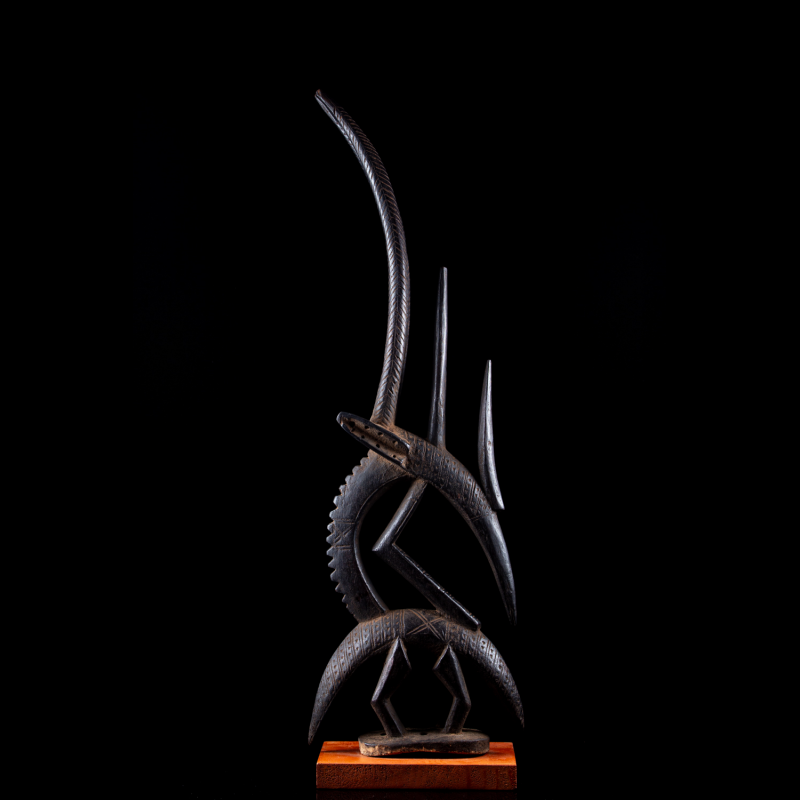















Traditionally, headdresses called Tyi Wara Koun, or "farming animal hat", represented the mythical antelope, who taught man agriculture.
His spirit was resurrected during planting and harvest to ensure the fertility of the crops. The headdresses were in male and female pairs on basketry caps. The dancers were bent over forelegs of wooden sticks and were completely hidden by cloaks of plant fiver.
In a few areas the spirit of Tyi Ware is still eulogized, and headdresses danced, in a strictly religious context. More commonly, however, both the function and style have altered greatly and each region uses the antelope headdress to suit its own needs. It is a practical approach to categorize the antelope headdresses by style and then list the regions in which they are generally found. There is much crossover of usage and more than one type of antelope headdress can be used within the same village complex. There are four distinct styles of headdress, and the function of each is different. The large vertical headdress is called Tyi Ware Koun, the horizontal is called Gonzon Koan, the two small verticals are called Sogoni Koun and Gonba Koun.
The Sogoni Koun small antelope headdress originated among the Wasuluka tribe. according to oral tradition, it began in the village of Faraquaran in the Bougouni region.
The Bougouni region remains its center of influence but is has spread to the Bamana and is even danced in the capital city of Bamako.
The secrets of its performance were brought to the people by a woman, who had learned them from sorcerers. She is often depicted riding in front of the horn of the antelope. Today the Sogoni Koun is danced by ton youth association members for group entertainment, and by itinerant performers who travel from village to village. When a ton uses Sogoni Koun, it uses only on or two, and only the most skilled dancers perform. The headdresses may be brought out during agricultural activities, but they are used strictly for entertainment.
They are also danced at marriages, circumcisions, and the annual festivals sponsored by youths.
This wonderful mask comes from the Dr. Kremer's collection in Switzerland.
Data sheet